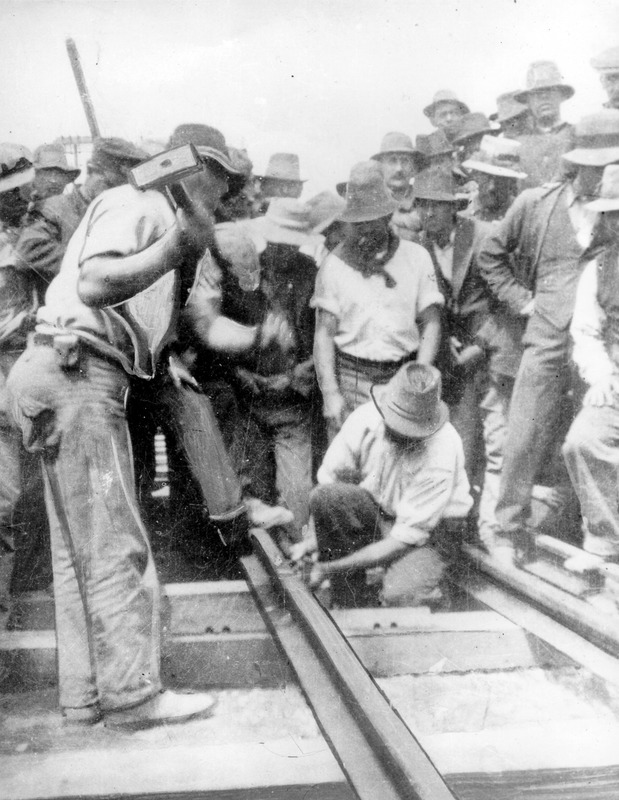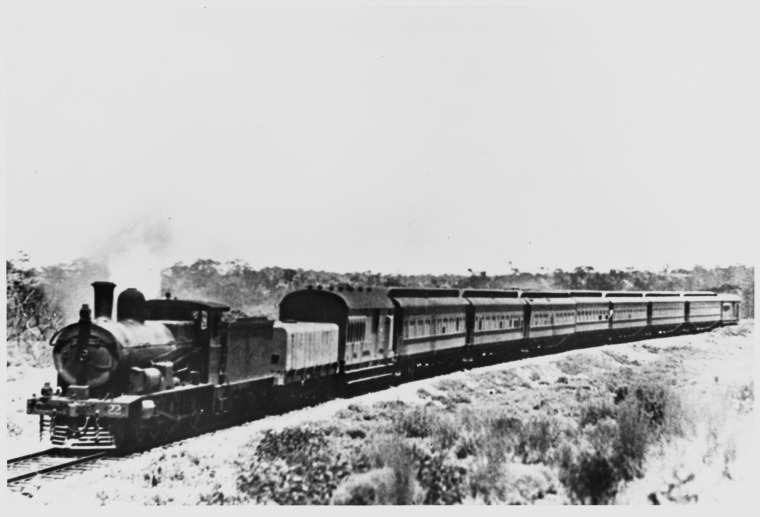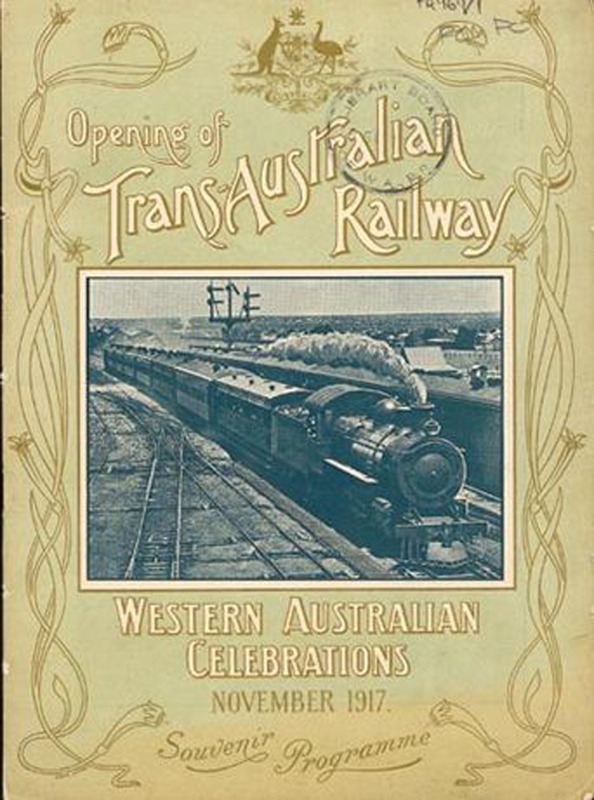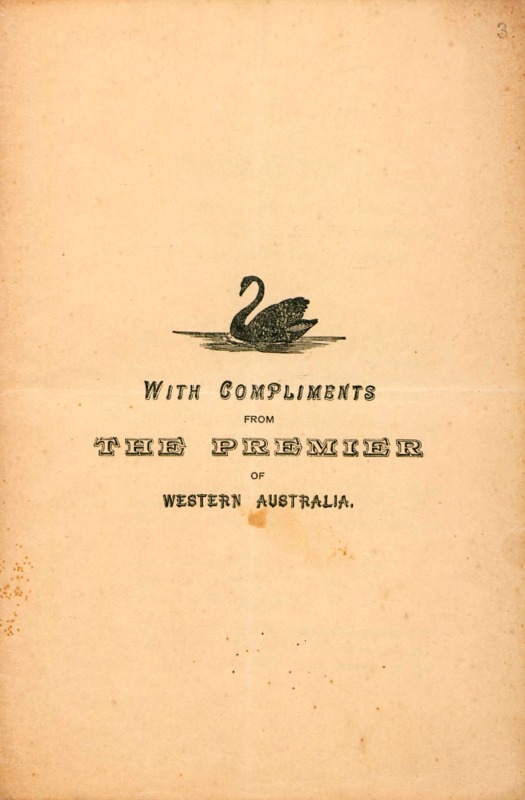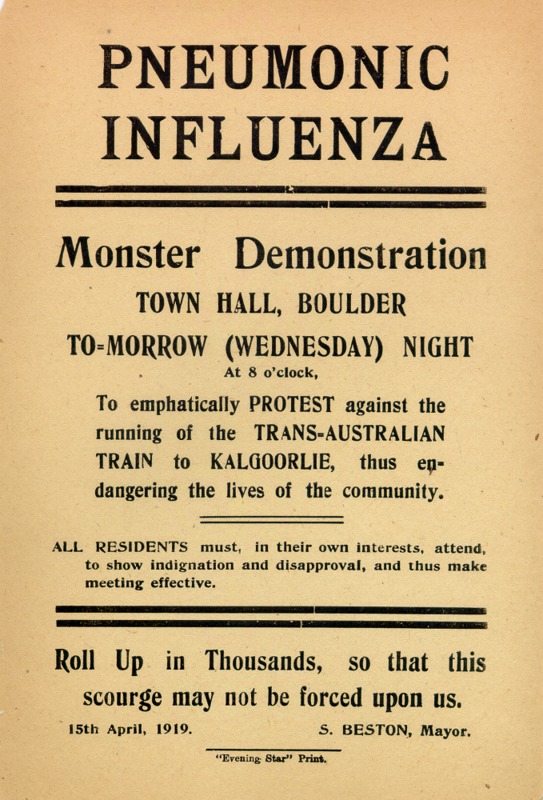Railways in Western Australia
The opening of the transcontinental railway line in 1917 was the culmination of two decades of agitation on the part of Western Australian politicians. For many the railway line was the final link in the chain of Federation. The official party which rode on the first railway carriage consisted of State and Federal figures, including Sir John Forrest, former Western Australian Premier and Deputy Prime Minister.
It was described in an extract from an interview:
"My mother went to Melbourne when the railway opened in 1917. She joined the train at Kellerberrin and when she stepped into the carriage (first class carriages were four berth sleepers in those days) ... When they transferred from the West Train to the East Train and they had to walk over sleepers with the water gushing underneath, carrying luggage, (also they had to take their own food - no dining cars then) it was night time when they were transferring (also John Forrest was on the same train and he was very worried). The gangers were walking along with lanterns to show a bit of light"
Mrs Gladys York, 12 March 1976. Battye Library, OH105
The railway finally provided a land link for Western Australians with their eastern neighbours. Apart from increasing trade between the States, the train provided an opportunity for many to travel. The journey across the Nullarbor was a long and often uncomfortable ride. For nearly two decades it was the only alternative to taking a steamship from Fremantle, Albany or Esperance.
Until the introduction of the Indian Pacific service in 1970, travel between west and east involved changing trains and railway gauges whenever crossing State borders. Yet for all its inconvenience, perhaps because of it, the railway remained an important symbol of national unity.
Focus questions
- Are the railways still an important link with the Eastern States? What are the railways used for? Have any other forms of transport taken their place?
- What resources do we rely on from the Eastern States? How are they transported to Western Australia?
- Was there any resistance to the transcontinental railway? If so, what form did it take?
Key words
transcontinental railway
land link
national unity
Further reading
National Museum of Australia - Trans-Australian Railway
Wikipedia - Trans-Australian Railway
National Film and Sound Archive of Australia - The Commonwealth's Trans-Australian railway

